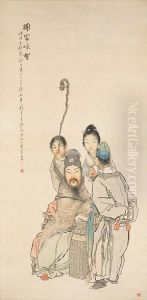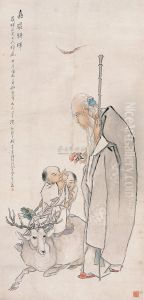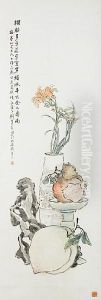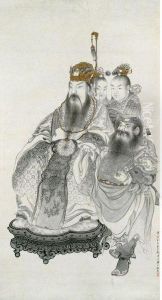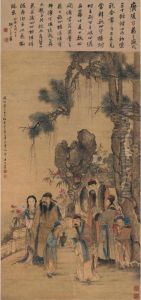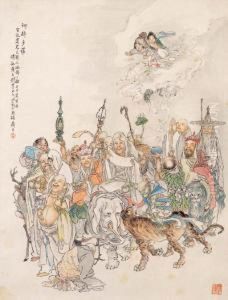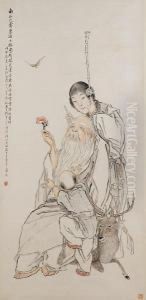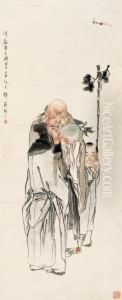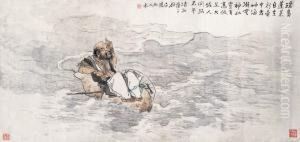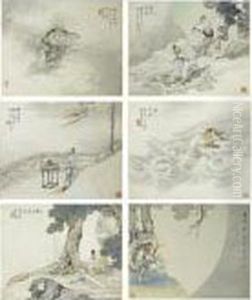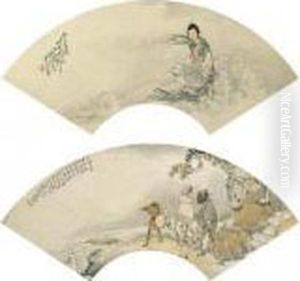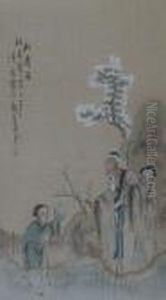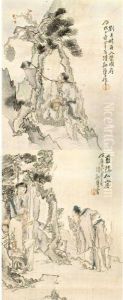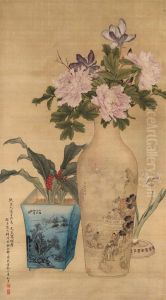Qian Hui'An Paintings
Qian Hui'an, also known as Qian Songyan, was a Chinese painter who lived during the Qing Dynasty. He was born in 1833 in Xiuning, Anhui province, and passed away in 1911. Qian was recognized for his contribution to the development of the Xin'an school of painting, which combined elements of both the traditional Chinese painting style and Western techniques. He was particularly renowned for his landscape paintings, which often featured mountains and water scenes, as well as his depictions of flowers and birds.
Qian's artistic style was characterized by a strong emphasis on the use of light and shadow, a technique that was not commonly used in traditional Chinese painting at the time. He was also known for his innovative use of perspective and his ability to capture the subtleties of natural scenery. Qian's works were marked by a dynamic and lively brushwork, which gave his paintings a sense of movement and vitality.
Throughout his career, Qian Hui'an was influenced by a number of different artists, both from the Chinese tradition and from abroad. He was particularly inspired by the works of Shi Tao and the innovative spirit of the Eight Eccentrics of Yangzhou. Qian was also exposed to Western artistic techniques, which he incorporated into his own work, creating a unique blend of East and West in his paintings.
Despite his considerable skills and contributions to Chinese art, Qian Hui'an did not achieve significant fame during his lifetime. It was only after his death that his work began to be more widely recognized and appreciated. Today, Qian Hui'an is celebrated as a master of Chinese painting, and his works are held in high regard by collectors and art enthusiasts around the world.



